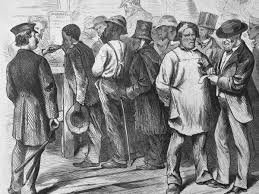By Alabama Appleseed Center for Law & Justice
The U.S. Department of Transportation’s Selective Traffic Enforcement Program (STEP) provides additional funding to law enforcement agencies implementing programs to deter dangerous driving. As a condition, agencies must report the number of traffic stop warnings and tickets issued to the state’s STEP grant administrator. Agencies risk reduced funding if found to be not “productive” by issuing a sufficient amount of citations. Police departments in Alabama use these federal grants to drive economic sanctions by paying patrol officers overtime to be “productive” and rewarding the “most active” officers with more overtime at the end of the year; those found to be not “productive” face suspension from the program in some departments. Using municipal budgets and audits, legal records of those ticketed and arrested over court debt, and federal and state grant data, this report examines the incentives that drive policing decisions in Alabama and highlights how traffic stops–primarily regulatory and economic stops–harm low-wealth people. The report also includes personal accounts of individuals who faced court debt and provides recommendations for law enforcement, courts, and lawmakers.
Key Findings:
68 percent of law enforcement agencies statewide that received STEP funding issued more warnings to speeders than to drivers with car insurance violations —who instead received tickets.Cleburne County adds an additional $30 fee to the base of their fines for planning, designing, constructing, furnishing, equipping, and financing a county jail.Findings from two municipal budgets showed revenue from fines and fees is volatile.In 2021, the Anniston Police Department was twice as likely to issue tickets for an insurance violation than a warning when compared to those stopped for speeding. Drivers who miss enough payments or court appearances are issued a suspended driver’s license and an order for arrest.
Recommendations:
Alabama police departments should look into how the prioritization of moving violations over equipment and regulatory stops by the Fayetteville Police Department in North Carolina has reduced traffic fatalities, injuries, and racial disparities.Courts should hold ability to pay hearings before ordering an arrest or placing a person on payment plans.Lawmakers should require publicly available reporting on all traffic stops.
Alabama Appleseed Center for Law & Justice, 2023. 36p.






